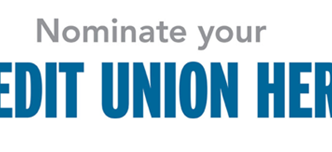Student loans make up an increasing share of the debt held by borrowers around the country, particularly for younger borrowers, says the CFPB. Previous research has shown that borrowers vary greatly in their ability to pay off their loans, how quickly they can do so, and the potential hurdles they face. The CFPB recently released a new Data Point report providing a closer look at borrowers’ use of credit as they approach and make their final student loan payments, and in the months that follow.
Looking at how borrowers pay off their student loans helps with understanding how households manage their finances over time. This research helps with better predicting the impacts new policies or products may have on homeownership, credit card use, and the broader economy as a whole.
As background, the typical student loan has a term of 10 years, with equal monthly scheduled payments. However, borrowers can pay the loan off early at any time by using savings, gifts, or other resources, or by refinancing with a new loan. The CFPB analyses focus on how borrowers first pay off a student loan and what happens next.
Key findings include:
- Most borrowers paying off a student loan do so before the final payment is due, often with a single large final payment. The median final payment made on a student loan is 55 times larger than the scheduled payment (implying a payoff at least 55 months ahead of schedule), with 94 percent of final payments exceeding the scheduled payment and only 6 percent of loans paid off with the final few payments equal to the scheduled payments. Even among loans within five years of their scheduled payoff date, for which refinancing is uncommon, the median final payment is more than seven times larger than the scheduled payments made immediately prior.
- Borrowers paying off a student loan early also reduce their credit card balances and make large payments on their other student loans at the same time. In addition, these borrowers are 31 percent more likely to take out their first mortgage loan in the year following the payoff than in the year preceding the payoff. While this is evidence of a link between the timing of student loan payoffs and home purchases, the simultaneous reduction in credit card and other student loan balances suggests that increased wealth or income may influence when borrowers pay off student loans, reduce credit card balances, and purchase homes.
- The smaller share of borrowers who pay off their loan according to the scheduled payments pay down, rather than take on, other debts in the months following payoff. Paying off a loan reduces borrowers’ monthly payment obligations, and those with additional student loans put 24 percent of these savings toward paying down those other student loans faster. Borrowers also use 16 percent of the drop in their required payments to reduce credit card balances. Unlike for borrowers paying off a student loan early, those paying off on schedule are not more likely to take out a mortgage for the first time.
While this analysis focuses on student loan borrowers who are successfully paying off their loans, similar approaches could be applied to the large population of student borrowers struggling with rising balances, delinquency, or default. Such research could shed light on how borrowers use other credit products to cope with their student debt, how their access to other credit may be inhibited, and how available repayment plans and other programs change these outcomes.





